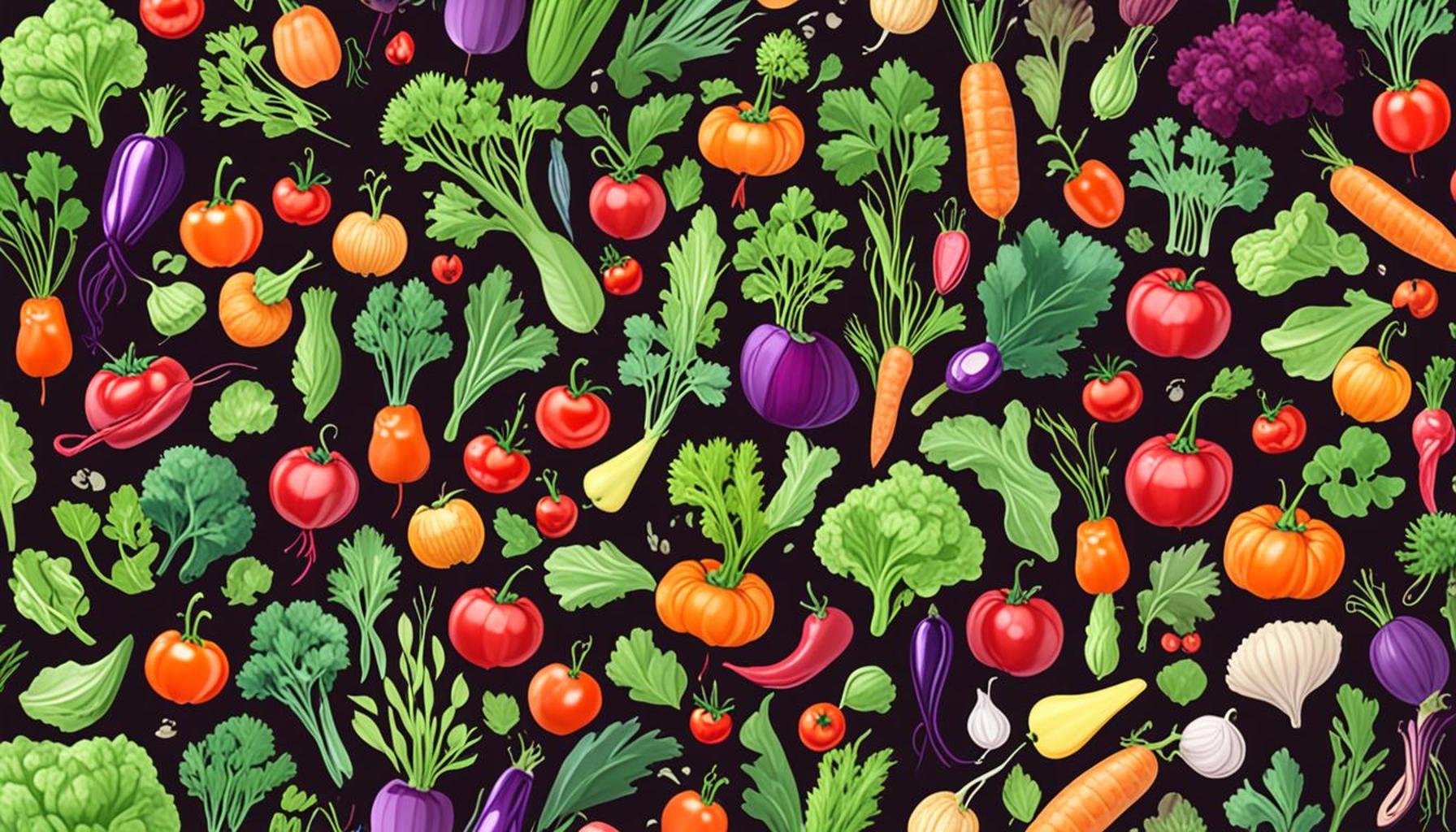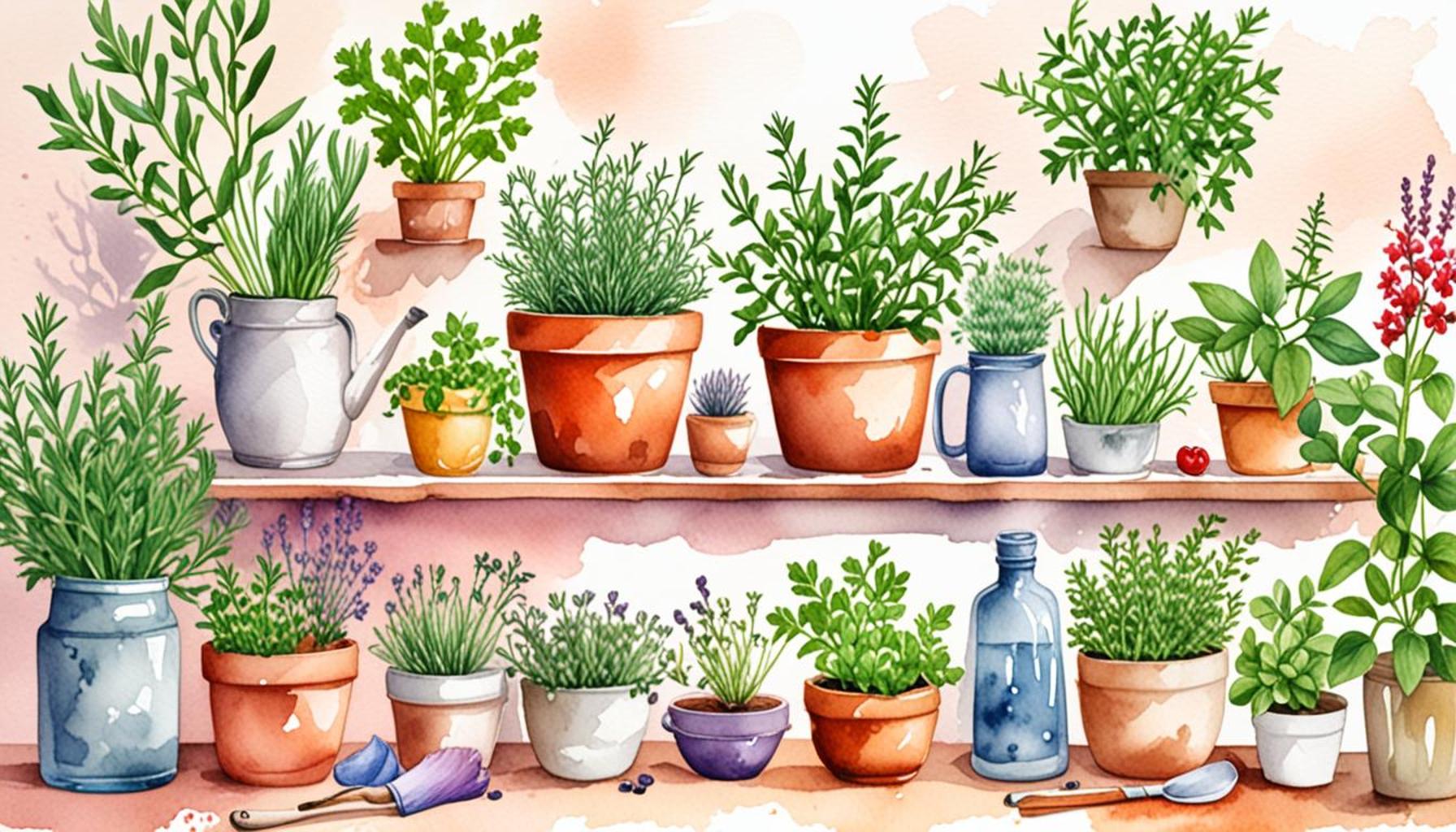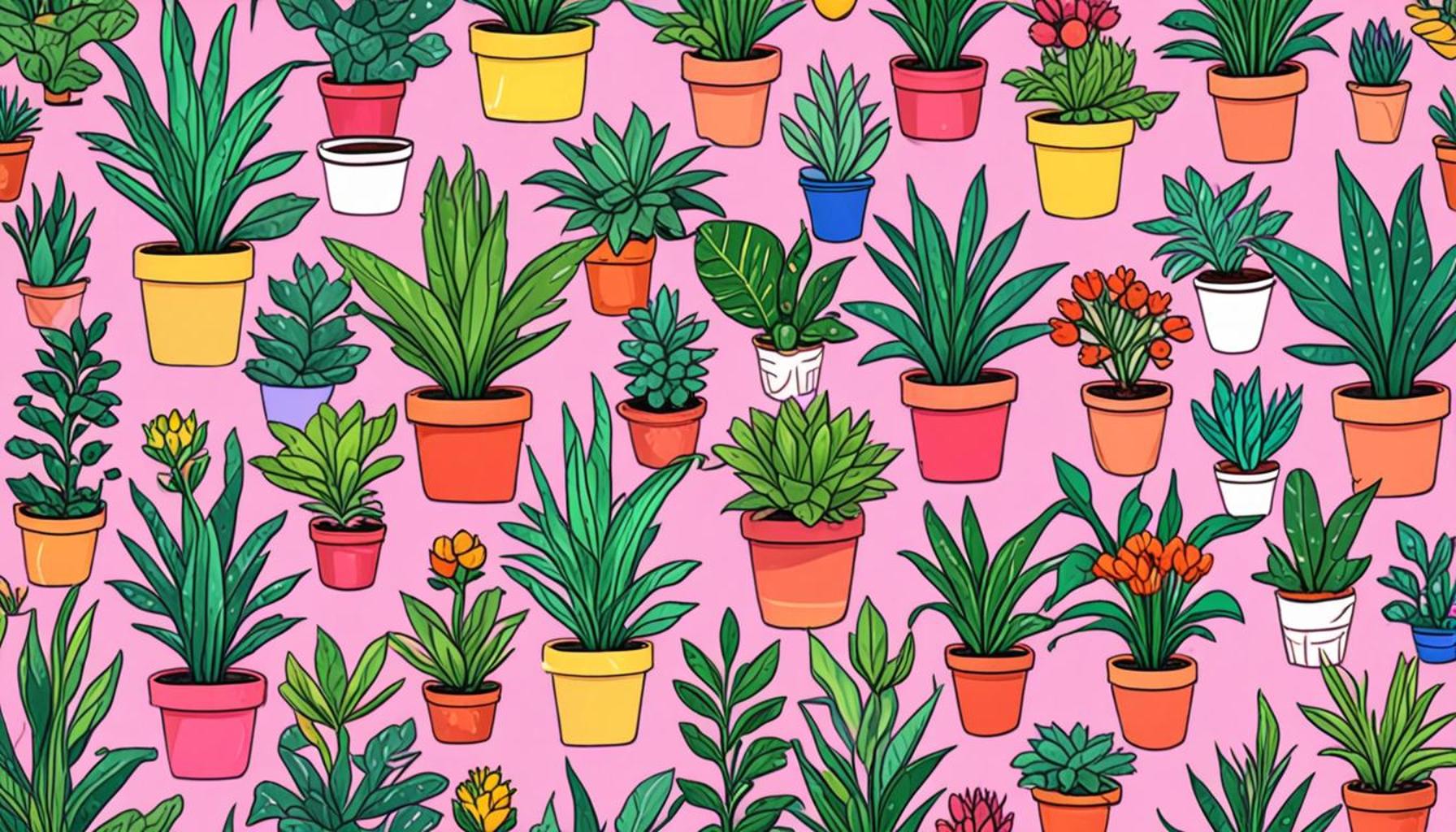Edible Plants: A Practical Guide for Beginners on Choosing Vegetables for Home Gardening

Unlock the Joy of Home Gardening
Diving into the world of home gardening opens up a vibrant realm of possibilities. With a garden right outside your door, you can enjoy fresh, homegrown vegetables, and foster a deeper connection to your food. But where do you begin? Transforming your backyard or even a small balcony into a productive garden space can be a delightful journey, one enriched with the joys of nurturing plants and watching them flourish.
This guide aims to simplify the process of selecting edible plants for your garden. Starting with a few key points will help you avoid rookie mistakes and set you on a path to success. Here are some essential factors to consider:
- Understanding Your Climate: Different vegetables thrive in varying climates. Research the specifics of your local USDA planting zone—ranging from 1 (coldest) to 13 (hottest)—to determine what is suitable for your environment. For instance, if you reside in a warmer region like Southern California, you might opt for heat-tolerant vegetables like eggplant and zucchini.
- Space Awareness: Assess the size of your gardening space. Whether you have a sprawling backyard or a cozy urban balcony, there are options for you. Container gardening is a fantastic solution for those with limited room; pots can support a variety of plants, from cherry tomatoes to herbs, maximizing your available space.
- Beginner-Friendly Options: Some vegetables are easier to grow, making them ideal for new gardeners. Consider starting your gardening adventure with:
- Tomatoes: A beloved staple, tomatoes are hearty and thrive in warm weather, providing a bountiful harvest with just a little effort.
- Lettuce: Quick to germinate and easy to maintain, lettuce varieties can be sown in early spring or late summer, offering fresh salads with minimal fuss.
- Radishes: These root vegetables grow rapidly and are perfect for impatient gardeners; they can mature in as little as three weeks!
- Peppers: Whether you prefer sweet bell peppers or fiery jalapeños, peppers are highly versatile and colorful additions to any garden.
Starting your own garden can seem daunting, but with the right information and resources, it can also be incredibly rewarding. Local agricultural extensions and gardening clubs often offer workshops that can provide valuable hands-on experience. Connecting with fellow enthusiasts not only enhances your skills but also opens doors to new friendships.
Moreover, the therapeutic benefits of gardening cannot be overstated. Engaging with nature has been proven to reduce stress and improve mental well-being. The act of planting seeds, watering them, and eventually harvesting the fruits of your labor creates a sense of fulfillment like no other. As you nurture your plants, you are also cultivating your own happiness.
Get ready to discover the secrets of growing your own food while enjoying the numerous benefits it brings. With a little preparation and enthusiasm, you can create a thriving garden that nourishes your body and soul. Let’s dig in!
DISCOVER MORE: Click here for effective pest control tips
Selecting the Right Vegetables for Your Garden
As you embark on your home gardening journey, the selection of edible plants is crucial to ensuring a bountiful harvest. Understanding the variations among vegetables, their growing requirements, and your personal preferences will result in a garden that delivers satisfaction and sustenance. Here are some important considerations to help you choose the best vegetables for your space:
Know Your Growing Season
The United States features a diverse range of climates, each with its own growing season. It’s vital to understand when frost occurs in your area, as this will greatly influence when to plant specific vegetables. Generally, the growing season can be divided into cool-season and warm-season crops. Cool-season vegetables like broccoli, radishes, and peas thrive in the chilly spring and fall, while warm-season varieties such as tomatoes, peppers, and cucumbers prefer the heat of summer.
Seed vs. Seedling
When planning your garden, consider whether you want to start from seeds or seedlings. Both methods have their benefits:
- Seeds: Starting from seeds allows for a greater variety of choices and can be more cost-effective. However, this method requires patience and effort, as seeds take time to germinate and grow.
- Seedlings: If you’re eager to see results more quickly, purchasing young plants from a nursery can save time and provide stronger, more established roots. This is particularly true for challenging vegetables like tomatoes that benefit from a head start.
Consider Your Dietary Preferences
Your personal tastes should play a significant role in the edible plants you choose for your garden. Do you enjoy salads filled with fresh greens, or are you more inclined towards hearty stews with root vegetables? Here are several popular categories to consider:
- Leafy Greens: Spinach, kale, and arugula are not only nutritious but also fast-growing and can be harvested throughout the season.
- Root Vegetables: Carrots, beets, and radishes can be sown directly into the ground, making them perfect for novice gardeners.
- Fruit-bearing Plants: Tomatoes, peppers, and squash are fun to grow and can yield a substantial harvest, allowing you to experiment with various recipes.
By pairing your gardening efforts with your culinary loves, you ensure that your hard work translates into meals you’ll genuinely enjoy. Even if you find yourself in an urban setting, options like container gardening can help you grow smaller varieties of these vegetables without needing extensive space.
Deciding which vegetables to grow is about more than just practicality; it’s about fostering a connection with the food you consume and the earth that nurtures it. Dive deep into research, explore local gardening advice, and reflect on your tastes to create a personalized planting plan that excites you for the growing season ahead.
| Category | Details |
|---|---|
| Nutritional Value | Homegrown vegetables offer freshness and are often richer in nutrients compared to store-bought options. |
| Cost-Effectiveness | Growing your own vegetables can significantly reduce grocery bills over time. |
When delving into the world of home gardening, understanding the various types of vegetables is crucial. Begin by choosing easy-to-grow plants like beans, radishes, and lettuce, which are perfect for beginners. Ensure that you consider your local climate and soil conditions for optimal growth. Utilizing resources such as local gardening clubs or online forums can enhance your knowledge base. Planting season is equally important; research when to sow each type of vegetable to maximize your yield. Pay attention to crop rotation methods to maintain soil health and prevent pest issues. Additionally, consider companion planting, where certain plants grow better together, which can also lead to a higher yield.One of the remarkable advantages is the opportunity to discover heirloom varieties of vegetables. These plants, often with unique flavors and colors, add a touch of excitement to your gardening journey. By engaging in home gardening, you will not only grow your own food but also contribute to sustainable living practices. Start your adventurous journey of cultivating edible plants today, and unlock the numerous benefits associated with home gardening!
DIVE DEEPER: Click here to learn more
Assessing Space and Soil Conditions
Another crucial factor in selecting the right vegetables for your home garden lies in understanding your available space and the condition of your soil. Not all vegetables require the same amount of sunlight or space, and various soil types can impact crop yield. Here are some essential considerations to help you navigate these challenges:
Understand Your Garden Space
Whether you have a sprawling yard or a quaint patio, assessing your available gardening space is essential. Determining sunlight exposure is vital, as most vegetables thrive in full sun, which typically means at least six hours of sunlight daily. If your space is limited to partial shade, consider selecting shade-tolerant vegetables such as lettuce, spinach, and leafy greens that can flourish with fewer hours of sunlight.
Additionally, think about the layout of your vegetable garden. Raised beds are a popular option for maximizing growing potential while allowing for improved soil drainage. If you’re short on land, vertical gardening or container gardening could be great solutions. Vertical gardening allows you to grow less space-consuming veggies like peas or tomatoes, climbing on trellises or walls. Meanwhile, container gardening gives you the flexibility to place pots in sunny spots, making the most of various locations.
Test Your Soil Quality
The health of your garden largely depends on the quality of your soil. Conducting a simple soil test can provide insights into nutrient levels, pH balance, and organic matter. Many local extension services offer testing kits, and the results can identify any deficiencies that may require amendments before planting. Vegetables like carrots and potatoes prefer loose, sandy loam soil, while leafy greens may thrive better in loamy or clay-containing soils.
Enriching your soil with organic matter, such as compost or well-rotted manure, enhances fertility and can improve food flavors. As you build your garden, consider implementing crop rotation each season. This technique prevents nutrient depletion, reduces soil compaction, and interrupts pest cycles, ensuring long-term productivity.
Prioritize Pest and Disease Resistance
When selecting vegetables for your garden, it’s wise to focus on those that are resilient against pests and diseases prevalent in your area. By choosing disease-resistant varieties of tomatoes, cucumbers, and squash, you can reduce the need for chemical treatments and foster a sustainable gardening approach. Many seed catalogs will indicate which varieties are bred for disease resistance, so be sure to read through these descriptions carefully.
Additionally, incorporating companion planting can help naturally deter pests while promoting healthy growth. Plants such as marigolds can keep aphids at bay and improve pollination, while basil is noted for enhancing tomato growth and flavor. Researching which plant pairings work best can enhance your vegetable gardening experience and add another layer of intrigue to your garden.
As you selectively choose vegetables based on available space, soil conditions, and resistance to pests, you pave the way for a fruitful and enjoyable home gardening journey. Remember, this endeavor is not just about food production; it’s about cultivating a newfound appreciation for nature and the culinary possibilities that come with your laborious efforts.
LEARN MORE: Click here for essential soil tips
Conclusion
Embarking on the journey of home gardening opens up a world of delicious possibilities and personal satisfaction. By understanding the key factors involved in selecting the right edible plants, you can create a vibrant vegetable garden that flourishes based on your unique space and soil conditions. Remember that assessing light exposure and soil quality are paramount in determining which vegetables will thrive in your specific environment. Whether you opt for raised beds, vertical gardens, or even a few hearty container plants, finding a method that suits your lifestyle is essential.
Moreover, prioritizing disease-resistant varieties and employing practices like companion planting not only enhance your crop yield but also promote a healthier ecosystem within your garden. The value of nurturing your plants extends beyond mere aesthetics or food production; it fosters a deeper connection with nature and encourages you to embrace sustainable practices.
As you cultivate your very own edible garden, allow your choices to be guided by your culinary preferences and local growing conditions. Take this opportunity to experiment, learn, and grow. From seasonal favorites to heirloom varieties, each vegetable presents a chance to explore flavors that can enrich your meals and nourish your body. With patience and creativity, your beginner’s gardening expedition can blossom into an enriching lifelong hobby, providing fresh produce and a newfound appreciation for the bounteous gifts of the earth.


